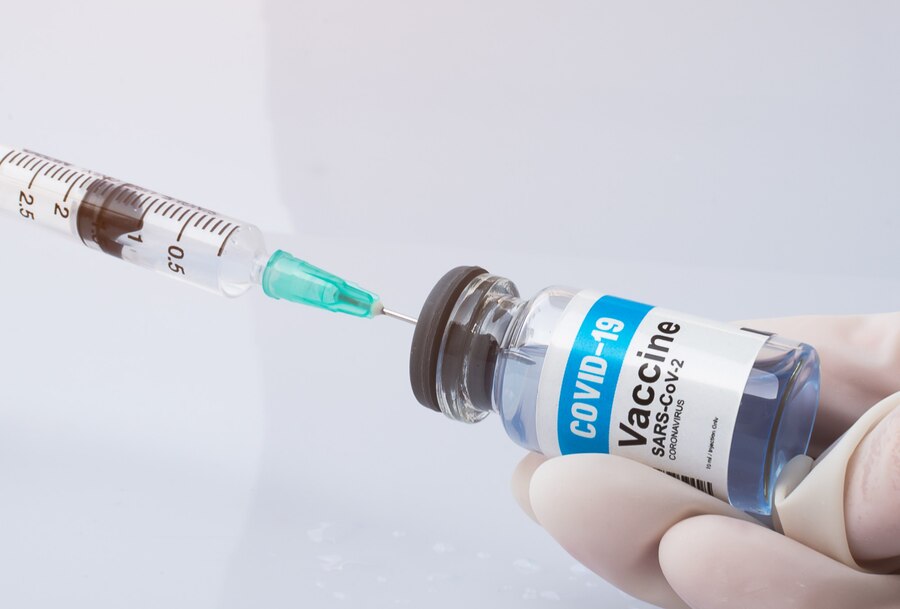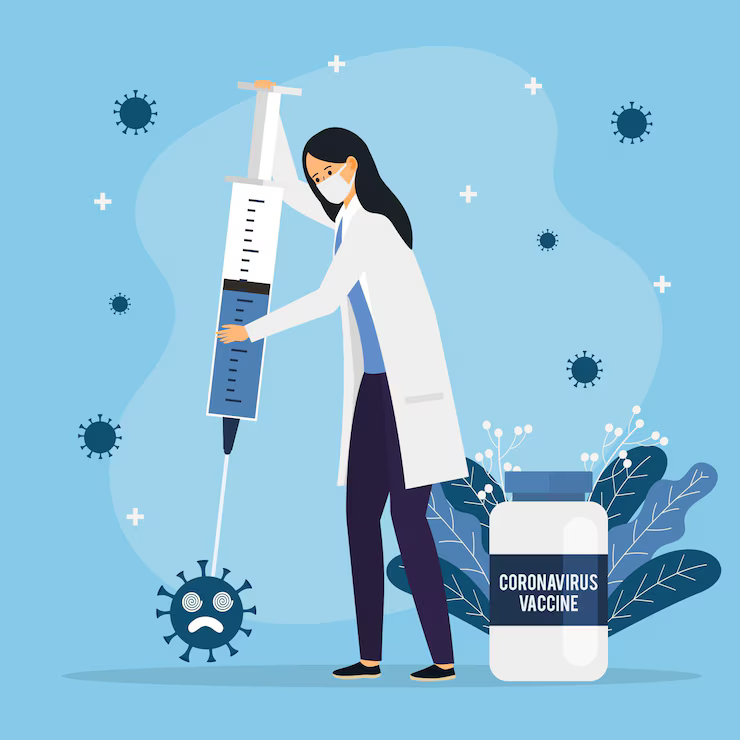Early in 2020, COVID-19 quickly spread from a local outbreak to a full-fledged worldwide pandemic, leaving the world to contend with an unseen foe. The need for a medical solution spurred an unprecedented pooling of talent, resources, and international collaboration. To shorten the typically ten-year process to just a few months, governments, health organizations, and pharmaceutical companies invested billions of dollars in vaccine research. Among the frontrunners of this monumental scientific feat was the AstraZeneca COVID-19 vaccine, born out of a powerful partnership between pharmaceutical giant AstraZeneca and the University of Oxford. AstraZeneca’s vaccine symbolized global health solidarity, affordable innovation, and equitable access, transcending its role as a mere medical tool. Understanding AstraZeneca’s COVID-19 Vaccine involves examining its viral vector technology, efficacy, and role in global vaccination efforts

The Oxford-AstraZeneca Partnership
Formerly known as AZD1222 (and Covishield in India), the AstraZeneca vaccine was created in partnership with the Jenner Institute at the University of Oxford. This collaboration was essential to producing a vaccine that was both safe and effective at record speed. AstraZeneca supplied the infrastructure for mass production and worldwide distribution, while Oxford contributed its extensive research on coronaviruses and vaccine platforms. This endeavor was motivated by a dedication to affordability and accessibility, in contrast to certain pharmaceutical partnerships that are motivated by financial gain. AstraZeneca’s non-profit vaccine distribution during the pandemic ensured wide availability, particularly in developing countries, a rare pharmaceutical commitment.
The Science Simplified: How AstraZeneca’s Vaccine Works
AstraZeneca’s vaccine employs viral vector technology, in contrast to mRNA vaccines like Pfizer-BioNTech and Moderna. Put more simply, researchers altered a weakened chimpanzee adenovirus—a virus that causes the common cold—so that it was unable to reproduce in people. The genetic instructions needed to create the spike protein present on the surface of the SARS-CoV-2 virus, which causes COVID-19, were then transferred by this innocuous virus. After injection, the immune system recognizes this spike protein and begins generating T-cells and antibodies, preparing the body to identify and combat the actual virus if it is ever exposed. Though different from mRNA, this method effectively trains immunity against COVID-19, proving safe and effective in extensive trials.
Before delving into the side effects, it’s crucial to emphasize the importance of COVID-19 vaccination. Vaccines have been proven to be effective in reducing the risk of severe illness, hospitalization, and death from COVID-19. Vaccination protects individuals and fosters herd immunity, becoming a vital collective step towards ending the pandemic.
Trials, Safety, and Addressing Concerns
Like all approved vaccines, AstraZeneca’s was put through a rigorous clinical trial process in a number of nations, including South Africa, Brazil, and the United Kingdom. According to these trials, the vaccine’s efficacy was 70% on average, with some regimens demonstrating 90% efficacy. Most significantly, it decreased hospitalization, death, and severe illness. However, worries regarding uncommon cases of blood clotting (Thrombosis with Thrombocytopenia Syndrome, or TTS) emerged as the vaccine was being introduced. Investigations were started by international health organizations such as the World Health Organization (WHO) and the European Medicines Agency (EMA). Despite acknowledging rare risks, they concluded the benefits, especially during a pandemic, significantly outweigh any potential harm. Some nations updated their guidelines to suggest different vaccines for specific age groups, but AstraZeneca remained a key player in the global immunization effort.

Efficacy, Affordability, and Storage: Key Advantages
One of the most remarkable aspects of AstraZeneca’s vaccine is its cost-effectiveness. Priced between $3 and $5 per dose, it was far more affordable than mRNA vaccines, which could cost ten times more. In addition, it could be stored at standard refrigerator temperatures (2–8°C), making it ideal for use in countries with limited cold chain infrastructure. These attributes made the vaccine a cornerstone of vaccine campaigns in low- and middle-income countries, allowing healthcare systems in Africa, South Asia, and Latin America to roll out mass immunizations efficiently.
A Vaccine for the World: COVAX and Global Equity
AstraZeneca became the backbone of the COVAX initiative—co-led by WHO, GAVI, and CEPI—to ensure equitable vaccine access worldwide. More than 180 countries received doses through this platform, many of them unable to secure bilateral deals with other manufacturers. For example, India’s Serum Institute—the world’s largest vaccine producer—manufactured Covishield and supplied it to nations like Nepal, Bangladesh, Kenya, and Nigeria. In many of these countries, AstraZeneca’s vaccine was the first to be delivered and administered, offering a lifeline during the critical early months of the pandemic. Global distribution transformed the vaccine into a symbol of health diplomacy and international collaboration, beyond mere medical success.
Political and Diplomatic Impacts
Beyond the lab and the clinic, AstraZeneca’s vaccine influenced geopolitics. Nations like India used the vaccine as part of their “Vaccine Maitri” initiative, supplying doses to over 90 countries. It became a tool of soft power and goodwill, helping to bolster diplomatic ties. Conversely, vaccine shortages and export bans sparked controversies and raised questions about the ethics of vaccine nationalism. Still, the AstraZeneca vaccine remained a key enabler of diplomacy and goodwill for many nations, offering both practical support and political leverage.
What’s Next? Variants, Boosters, and Continued Research
As new variants like Delta and Omicron emerged, researchers investigated the vaccine’s performance against evolving strains. While the vaccine’s ability to prevent mild infections declined, it continued to provide strong protection against severe disease. Booster shots were introduced—sometimes with mRNA vaccines as a mix-and-match strategy—to strengthen immunity. AstraZeneca also began trials to adapt the vaccine for emerging variants and improve its long-term efficacy. Ongoing studies are examining its performance in different populations, age groups, and against future variants, helping shape the next phase of pandemic preparedness.
Expert Voices and Global Perspectives
Dr. Soumya Swaminathan, former Chief Scientist at WHO, remarked, “AstraZeneca’s vaccine stands as a testament to how global cooperation, public funding, and scientific innovation can save lives.” Similarly, Dr. Andrew Pollard of the Oxford Vaccine Group noted, “This vaccine wasn’t just built in a lab—it was built on a promise of equality.” Their insights reinforce the broader value of AstraZeneca’s vaccine, not just in combating disease, but in reshaping the ethics of global healthcare.
Understanding AstraZeneca Vaccine Side Effects
- Serious Side Effects are Very Rare: Blood clots (cerebral venous sinus thrombosis) and allergic reactions are extremely rare side effects.
- Injection Site Reactions: Pain, redness, or swelling at the injection site are common and typically resolve within a few days.
- Fatigue and Malaise: Feeling tired or rundown is a common side effect reported by some individuals after receiving the vaccine. Rest and hydration can help alleviate these symptoms.
- Headache: Headaches are another common side effect, often mild to moderate in intensity and short-lived.
- Muscle or Joint Pain: Post-vaccination, some may experience muscle or joint pain, typically subsiding within a few days.
- Fever and Chills: Low-grade fever or chills may occur as the body’s immune response is activated by the vaccine. These symptoms are typically mild and transient.
- Nausea and Vomiting: Although less common, some individuals may experience gastrointestinal symptoms such as nausea or vomiting after vaccination.
What to Do
- Pre-vaccination Consultation: Discuss your medical history and any allergies with your doctor before getting vaccinated. This helps them assess any potential risks.
- Post-vaccination Awareness: While serious side effects are uncommon, be aware of the signs and symptoms listed above. If you experience them, seek immediate medical attention.
Remember that these side effects are temporary and indicate that your immune system is responding to the vaccine. If you experience any unusual symptoms, consult a healthcare professional.
The Legacy of AstraZeneca’s COVID-19 Vaccine
The story of AstraZeneca’s vaccine is far from over. It remains a critical tool in the global health arsenal, with millions still receiving doses. But its impact extends beyond immunization. It proved that vaccines can be affordable, effective, and accessible. It showed that global cooperation works. And it left a blueprint for future pandemic responses rooted in equity and scientific integrity. As the world slowly transitions from crisis mode to long-term management, AstraZeneca’s contribution will be remembered not just in doses delivered but in lives saved and systems strengthened.
In closing, AstraZeneca’s COVID-19 vaccine is not just a chapter in medical history—it’s a milestone in humanity’s ability to unite against a common threat. For public health advocates, students, and citizens of the world, it stands as proof that when science serves humanity, the results can be nothing short of revolutionary.
Reliable Sources of Information
- World Health Organization (WHO)
- Centers for Disease Control and Prevention (CDC): https://www.cdc.gov/coronavirus/2019-ncov/vaccines/index.html
Read Also
- The Drugs and Vaccines That Changed the Course of History
- Top Research Centers in India
- Life’s Lab: Exploring Chemistry in Everyday Moments
- Spatial Omics Technology
- G20 Summit
- Mindfulness and Mental Health in Schools
- The Metaverse: A New Frontier for Mental Health?
- Healthtech Innovations: Revolutionizing Healthcare in India
- Robots in Healthcare: Enhancing Patient Outcomes
- National Smile Day: The Power of a Healthy Smile
- Swimming: A Dive into Health and Recreation
- Writing About Mental Health Topics for Health Blogging

Beco Bamboo Soft Facial Tissue Papers- 100 Pulls (Pack of 6), 600 Pulls – 2 ply,100% Natural and Ecofriendly, Soft tissue box/pack
Our Organic Bamboo Tissue Papers are Paraben-free, BPA Free, Chlorine Free and Hypoallergenic causing no Skin Rashes. Beco Tissues have a Natural Bamboo Colour Since they are not bleached using artificial chemicals.
Frequently Asked Questions (FAQs)
While most side effects of the AstraZeneca vaccine are mild and temporary, individuals should seek medical advice if they experience concerning or persistent symptoms, such as severe headache, shortness of breath, chest pain, abdominal pain, or unusual bruising or bleeding.
Common side effects of the AstraZeneca vaccine include pain, redness, or swelling at the injection site, fatigue, headache, muscle or joint pain, fever, chills, nausea, and vomiting. These side effects are generally mild to moderate in severity and typically resolve within a few days.
The AstraZeneca vaccine is not recommended for individuals who have had a severe allergic reaction to any component of the vaccine. Pregnant or breastfeeding individuals should consult with their healthcare provider before receiving the vaccine. Additionally, individuals with certain medical conditions or immunocompromised individuals may need to discuss the risks and benefits of vaccination with their healthcare provider.
If you experience mild to moderate side effects after receiving the AstraZeneca vaccine, such as pain, fever, or fatigue, you can take over-the-counter pain relievers, rest, and stay hydrated. If you experience severe or concerning symptoms, seek medical advice promptly.
In some cases, individuals may receive a different COVID-19 vaccine as a booster dose or additional dose after receiving the AstraZeneca vaccine. However, the timing and eligibility for booster doses may vary depending on recommendations from public health authorities and regulatory agencies.






Your article helped me a lot, is there any more related content? Thanks!